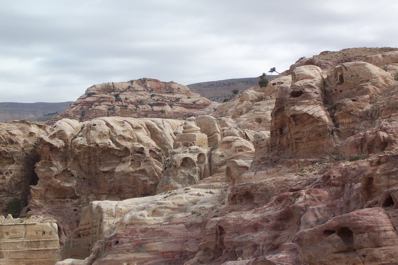Game Boards :
Throughout Petra and in other Nabataean sites, various board games that are found in ancient Petra ,, the most common ancient board game that was discovered was from a game played on a 4 x 12 playing board. Each of the playing spots was actually a small cup carved into the rock.
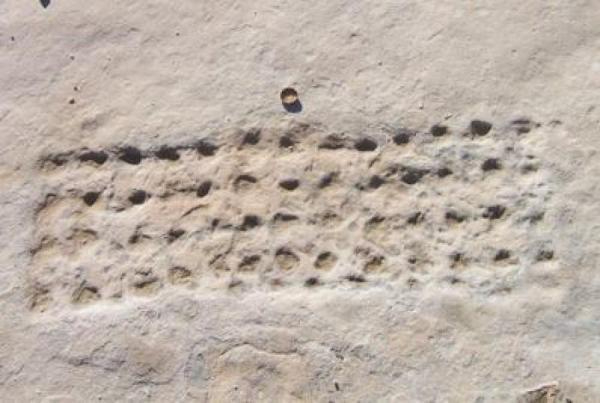
you can see a typical 4 x 12 playing board. This one was found near the Deir monument in Petra, and is typical of the most common type of game in ancient Petra. Other game boards included: 7 x 7 and 7 x 8 layouts as well as 8 x 14.
The ancient Nabataean scratched game boards into flat surfaces all over the city. These game boards can be found in the most interesting places. So if you are fortunate enough to visit the city of Petra and make a Day Tour, keep a sharp look out for these interesting items. While the adults are looking at the big, huge tombs and carvings, you can be spotting the game boards, and maybe even stopping to play a game or two! Below are pictures of some of the game board that we discovered around the city.

Some of the boards are very worn and hard to make out.
Instead of looking up at the marvelous monuments, we kept our heads down, and scoured the ground. It was an exciting visit to Petra, because game boards started popping up all over the place,
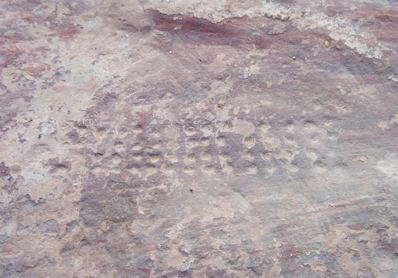
Snake Monument:
A little further along, on the other side of the road, is a curiosity that is rarely visited, though now steps have been built up to it. The Snake Tomb is carved into the rock with a narrow entrance and no outward display, but inside 12 graves are cut into the floor – clearly a family affair. On one wall there is a rough relief carving of two snakes attacking a four-legged animal (a dog?), while above it to the left is a horse with a block-shaped rider, carved on a smaller scale. What the figures signify is a puzzle, but the snake is believed to be a representation of the guardians of the underworld.
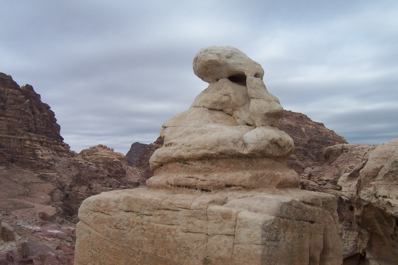
Its original function is another Petra puzzle, generating plenty of theories. These range from a spirit of the underworld guarding the dead to a representation of Dussehra, or of a foreign god, or generalized genius loci.

Looking south from beside Habis Mountain. This is the starting place for the hike to Sabara.
It was near here that David Roberts and his party, as they approached in March 1839, were pursued by Sheikh Abu Zeitun and an armed bedouin band. When they had made their peace, Roberts s travelling companion, Kinnear, described the joy of their first sight of Petra
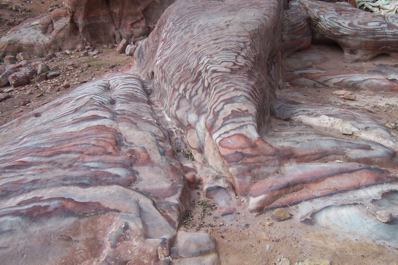
Along the way some very colorful rocks, as well as tombs and caves in the base of Umm Al Biyara Mountain.
There are two ways to get to Al Sabara. The first, described below, is to start at Darshares Temple and hike along the bottom of Umm al Biyara (as if you were going to Aaron s Tomb) until you get to the snake monument. From there it is another hour hike to Wadi Al Sabara. At one time this route was signposted. The second route starts on the Hotel Road above Wadi Mousa. Start south of the Grand View Hotel and head down the mountain and west towards the Sabara mountains. You pass down fields, a rough road and just before the flat-topped Tabqa mountains turn south down the gorge called Ras Sabara, along a clear track until the wadi widens. From there it is easier to hike into Petra than to climb back up the mountain.
The Southern Tombs & The amazing snake monument takes a bit of a scramble to see.
All that remains of this once huge monolith is the base of a square-cut rock on which are the lower coils of a snake. Burckhardt described the djinn blocks but ignored the snake; Irby and Mangles wrote of a singular monument... an obtuse cone, produced by the coils of a spiral... standing on a vast square pedestal or altar .
